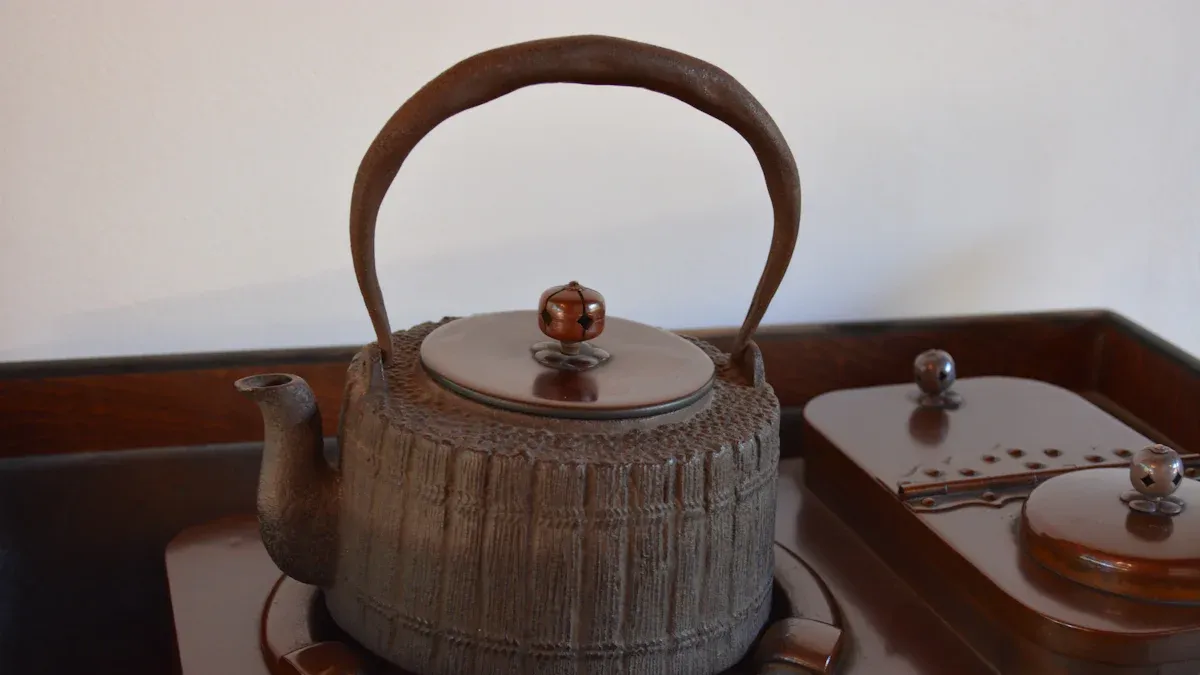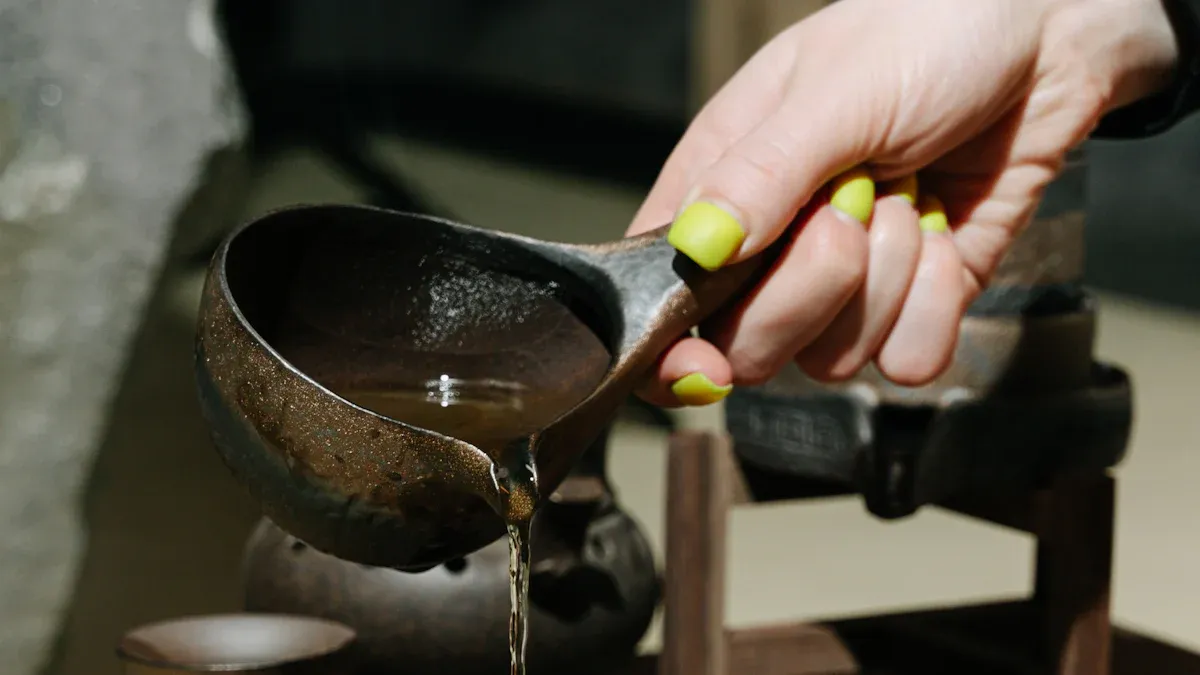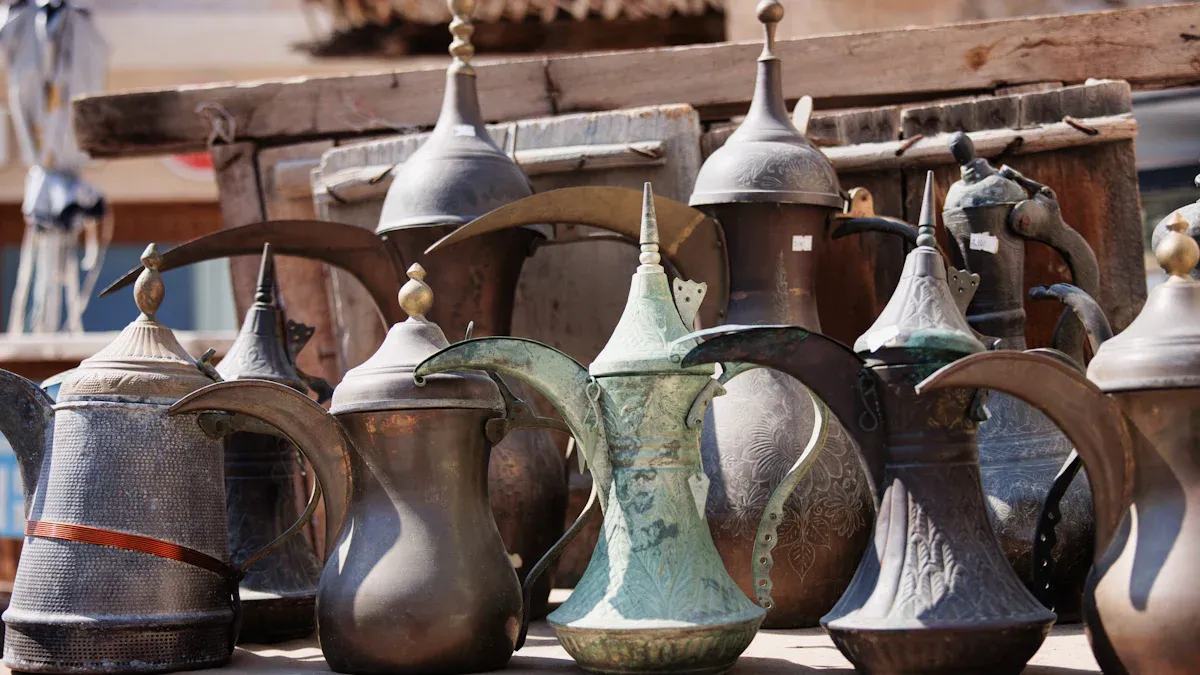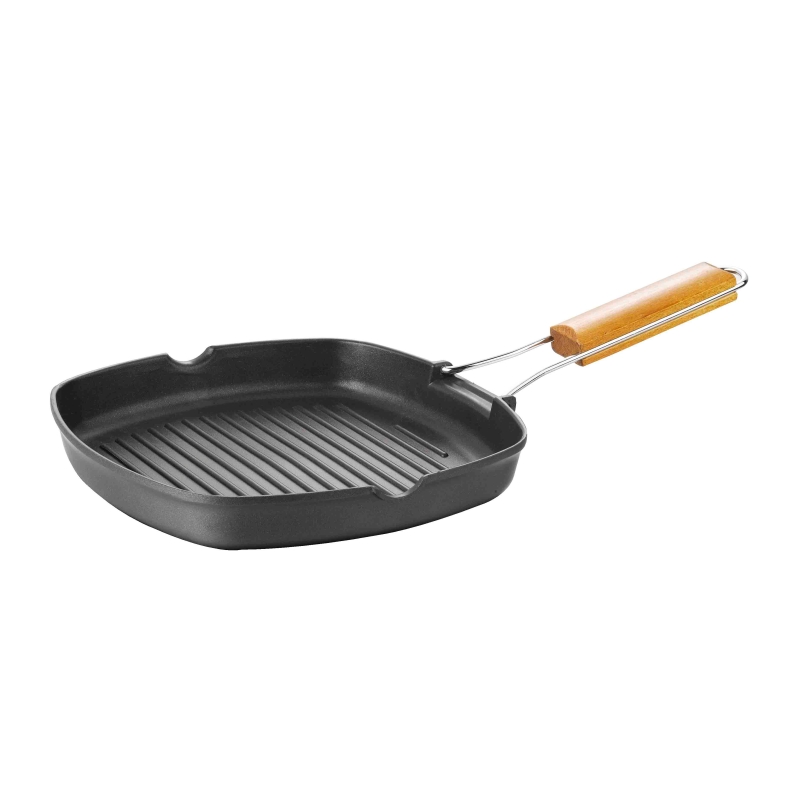
Ancient Chinese cooks valued safety and practicality when selecting materials for China Cooking Pot Handle designs. Archaeological finds at Shushan kiln sites reveal that pot handles, including hoop-handles and tubular styles, used Purple-Sand clay with mica for durability. Modern options like removable handle for cookware and stay cool cookware handle reflect this tradition. Stainless steel bakelite cookware handle and wok pan bakelite handle innovations show continued evolution in cooking pot handle technology.
Key Takeaways
- Ancient Chinese cooks chose pot handle materials like Purple-Sand clay, hardwood, and cloth to keep handles cool and safe from burns during cooking.
- Handle designs such as loops, textured surfaces, and longer lengths helped cooks grip pots securely and avoid accidents.
- Modern cookware handles continue this tradition by using heat-resistant materials like bakelite and stainless steel to ensure safety and durability.
Heat Resistance and User Safety in China Cooking Pot Handle

Preventing Burns with Insulating Materials
Ancient Chinese cooks faced the challenge of handling hot cookware safely. They selected materials that could resist heat and protect hands from burns. Potters often used Purple-Sand clay, which contains natural mica. This combination provided excellent insulation. Mica particles helped disperse heat, so the handles stayed cooler during cooking.
Wood also became a popular choice for cooking handles. Craftsmen shaped hardwoods into sturdy grips. These wooden handles did not conduct heat as quickly as metal, which reduced the risk of burns. In some regions, artisans wrapped handles with cloth or leather strips. This extra layer added comfort and further protected users from high temperatures.
Tip: When choosing a China Cooking Pot Handle today, look for materials with proven insulating properties. Modern bakelite handles and removable handle for cookware options continue this tradition of safety.
Handle Designs for Safe Cooking
The design of a pot handle affects both safety and ease of use. Early Chinese cookware featured looped or tubular handles. These shapes allowed cooks to grip pots securely, even when wearing thick cloth mitts. Some designs included raised ridges or textured surfaces. These features prevented slipping, especially when hands were wet or greasy.
Table: Common Ancient Handle Materials and Their Benefits
| Material | Benefit | Example Use |
|---|---|---|
| Purple-Sand Clay | Heat insulation, durability | Teapots, stew pots |
| Hardwood | Low heat conduction, comfort | Wok handles, soup pots |
| Cloth/Leather | Extra grip, burn protection | Wrapped around metal pots |
Handle length also played a role in safety. Longer handles kept hands farther from open flames. Shorter handles worked well for smaller pots used over gentle heat. Over time, the China Cooking Pot Handle evolved to match the needs of different cooking styles. Modern innovations, such as the stay cool cookware handle, reflect this ongoing focus on user safety.
Material Availability, Durability, and Technological Progress

Local Resources and Traditional Choices
Ancient Chinese cooks relied on materials found in their local environment. The evolution of teapots and cookware during the Tang, Song, and Ming Dynasties demonstrates this connection between resource availability and design. For example:
- Craftsmen in the Ming Dynasty used purple clay from Yixing to create teapots. This clay, rich in minerals, enhanced both the flavor of tea and the durability of the vessel.
- The unique properties of purple clay allowed artisans to shape intricate handles and spouts, reflecting both artistic and practical needs.
- Early teapot designs included handles made from the same clay, showing how local resources shaped the entire form and function of the vessel.
- The widespread use of local clay influenced not only teapots but also the broader development of China Cooking Pot Handle materials.
These choices ensured that cookware met the demands of daily life while celebrating regional craftsmanship.
Advances in Metalworking and Handle Innovation
Technological progress brought new materials and attachment methods to Chinese cookware. Metalworkers introduced riveted and welded handles, which improved the strength and longevity of pots and pans. Riveted handles provided stability, while welded designs created seamless connections that were easier to clean. Ergonomic shapes made gripping more comfortable and reduced user fatigue.
Manufacturers also began using screws fixed on studs, often protected by flameguards—metal rings that increased mechanical strength and heat resistance. Materials like thermoset compounds offered high thermal resistance, making handles safer near open flames. Stainless steel handles delivered durability and corrosion resistance, while wood and plastic options provided insulation and comfort. These innovations ensured that modern cookware handles remained cool and safe to touch, continuing the tradition of prioritizing user safety.
Post time: Aug-06-2025

